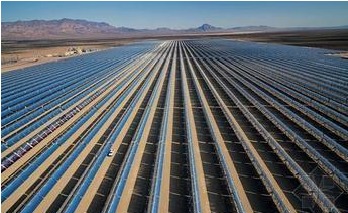 On July 31, the Ministry of Finance website published "Circular on the Implementation of Distributed Photovoltaic Power Generation in Accordance with Relevant Problems such as Electricity Subsidy Policy" (hereinafter referred to as "Notice"), clarifying the implementation measures for the policy of distributed photovoltaic power generation projects based on electricity subsidies and other policies.
On July 31, the Ministry of Finance website published "Circular on the Implementation of Distributed Photovoltaic Power Generation in Accordance with Relevant Problems such as Electricity Subsidy Policy" (hereinafter referred to as "Notice"), clarifying the implementation measures for the policy of distributed photovoltaic power generation projects based on electricity subsidies and other policies. Uniformity Electricity Subsidy
Encouraging large-scale demonstration zones
The "Notice" stated that the state granted subsidies for distributed photovoltaic power generation projects based on electricity, and the subsidy funds were transferred to the distributed photovoltaic power generation project units through the grid companies. The subsidized distributed photovoltaic power generation project must meet the following conditions: Complete the record according to the procedure. The specific filing methods will be formulated separately by the National Energy Administration; the project will be completed and put into operation, and the relevant conditions for grid connection will be met, and grid connection work such as grid acceptance will be completed.
It should be noted that the projects that enjoy the Golden Sun demonstration project grant funds and the solar photovoltaic building application financial subsidy funds do not belong to the distributed PV subsidy range. The photovoltaic power generation price determined by the photovoltaic power plant's implementation price management department does not fall within the scope of the distributed photovoltaic power generation subsidies.
The "Notice" stipulates that projects that meet the requirements may submit applications to the local power grid companies, which will be submitted to the relevant level of finance, price, and energy authorities after review. The projects within the scope of operations of the State Grid and China Southern Power Grid are aggregated by their subordinate provincial (district, city) power companies, and submitted to the State Grid Corporation of China and China Southern Power Grid Corporation after being reviewed and approved by the provincial finance, price, and energy authorities. The State Grid Corporation of China and China Southern Power Grid Corporation have reviewed and summarized the report and submitted it to the Ministry of Finance, the National Development and Reform Commission and the National Energy Administration. The Ministry of Finance, the National Development and Reform Commission, and the National Energy Administration will organize the audit of the submitted projects and list the eligible projects in the subsidy list for publication.
The "Notice" did not publish the subsidy standard. It only stated that the subsidy standard should take into account the situation of the distributed photovoltaic power-on-grid tariff, generation cost, and sales price, etc., and adjust it in due course. The specific subsidy standard will be announced separately after the National Development and Reform Commission issues the distributed PV on-grid tariff.
According to the reporter's understanding, although the National Development and Reform Commission has not released specific figures yet, people from the industry have learned that 0.42 yuan/degree should be a foregone conclusion. This is also in line with the spirit of the National Energy Board's previous session to promote the healthy development of the photovoltaic industry: the financial subsidies for demonstration area project applications do not exceed 0.45 yuan/kWh.
According to the "Notice", the grid companies will use the meter-reading cycle for meter reading and metering of the project's power generation, on-grid electricity, and self-use electricity in the subsidy list of distributed photovoltaic power generation projects as a basis for calculating subsidies.
Industry insiders questioned whether it is appropriate to implement uniform subsidy standards for projects in different regions and different user types.
In response to this, the Deputy Director of the China Renewable Energy Society, Meng Xianzhe, told reporters, “If you divide the area, you have to set a good variety of electricity prices, which is more difficult to operate. More importantly, because there is a limit to the market capacity, the subsidy funds are not sufficient. At present, policy orientation is to encourage large-scale demonstration zones."
According to the State Council's Several Opinions on Promoting the Healthy Development of the Photovoltaic Industry, the State encourages all types of power users to build distributed photovoltaic power generation systems in accordance with the methods of “self-use, surplus online, and power grid adjustmentâ€. Priority will be given to support the construction of large-scale distributed photovoltaic power generation systems in industrial and commercial enterprises and industrial parks with higher electricity prices.
"According to regulations, self-use of electricity and on-grid electricity enjoy a unified subsidy, but self-use electricity is based on the electricity price of 0.42 yuan / degree on the basis of electricity, while on-grid electricity is based on the benchmark price of desulphurization coal plus 0.42 yuan / degree. It is also worthwhile to use its own money," said Meng Xianyi.
In June of this year, the National Energy Administration required the provincial energy bureaus to compile plans for the implementation of distributed photovoltaic power generation demonstration areas to the National Energy Administration by July 10. The approved demonstration areas need to start project construction by the end of July. However, the list of demonstration zones so far has not been announced.
Supervision of funds should not be relaxed and expect the follow-up actions of the competent authorities
The "Notice" also provides for the method of fund allocation. According to the additional income from renewable energy prices and the estimated power generation from distributed photovoltaic power generation projects, the central government will allocate subsidy funds to the provincial finance departments of the State Grid Corporation of China, China Southern Power Grid Corporation, and local independent grid companies on a quarterly basis. According to the project power generation amount and the nationally determined subsidy standard, the grid company will pay the subsidy funds in time according to the electricity bill settlement period. The specific payment methods shall be formulated by the State Grid Corporation of China, China Southern Power Grid Corporation, and local independent grid companies.
In addition, the subsidy funding procedures for renewable energy power generation such as photovoltaic power stations, large-scale wind power generation, geothermal energy, ocean energy, and biomass energy are simplified. For the grid-connected power generation projects and grid-connected projects within the scope of the State Grid and China Southern Power Grid, the subsidy funds will no longer be disbursed by the provincial finance department, and the central government will directly allocate funds to the State Grid Corporation of China and China Southern Power Grid Corporation. With the additional funds for renewable energy prices already allocated by the central government, local financial departments should fully allocate the power grid companies at the end of August.
“This is a gratifying change. However, the supervision of funds has yet to be resolved. The next major step is to look at the two major power grids. The National Grid announced the “Opinions on Doing a Distributed Power Grid-connected Service Work,†but South ChinaNet has no action yet. The following is a look at the specific measures adopted by the National Energy Administration and the National Development and Reform Commission to implement the State Council's spirit of promoting the healthy development of the photovoltaic industry. Some experts said in an interview with reporters.
Plastic Bowl Food Choppers
Our Plastic Bowl Food Choppers are mainly have 0.6L plastic bowl, which is very suitable for personal using.
Description for Plastic Bowl Food Choppers
250W
0.6L plastic bowl
Multi chopper turbo operated by turbo button
S/S blade for chopping vegetables, herbs, onions, nuts and icecubes
With creamy function
Safety lock protection
Anti-slip rubber feet

Plastic Bowl Food Choppers
Plastic Bowl Food Choppers,Plastic Bowl Choppers,Kitchenaid Food Chopper,Plastic Small Food Choppers
Flying Electronic Co., Ltd , https://www.flyingelectronic.com